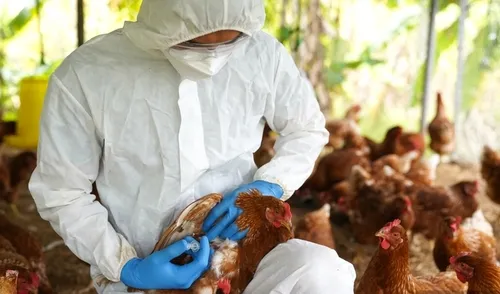Scientists Sound Alarm as H5N1 Bird Flu Shows Signs of Dangerous Adaptation
Scientists are raising alarms as the H5N1 bird flu virus demonstrates increasingly troubling signs of adaptation. With 68 reported human infections and one death already recorded in North America, the virus is defying traditional transmission patterns, and there are growing fears that it could mutate into an airborne pathogen, creating a severe threat to public health.

The Growing Threat of H5N1
H5N1, a strain of avian influenza, has long been a concern due to its potential to infect humans, primarily through direct contact with infected birds. However, recent developments have scientists on edge as the virus begins to show signs of adapting in ways that could make it easier to spread among humans.
The Centers for Disease Control and Prevention (CDC) in the U.S. has been closely monitoring outbreaks, particularly in dairy farms, where the virus has jumped from animals to humans, likely through contaminated droplets from milking machinery. While this mode of transmission is concerning, the possibility of the virus mutating to travel through the air has now become a significant worry.
Airborne Transmission: A Growing Concern

Historically, influenza viruses like H5N1 have been transmitted primarily through close contact or contaminated surfaces. However, certain flu strains have already shown that they can survive in tiny airborne droplets, which can remain suspended in the air for extended periods, allowing the virus to spread through inhalation. If H5N1 follows this path and adapts to airborne transmission, it could easily move through crowded spaces such as hospitals, restaurants, and public gatherings, without any direct contact needed.
The prospect of an airborne version of H5N1 is particularly alarming for public health systems worldwide, as it would make containment far more difficult, if not impossible. Unlike the traditional transmission methods, airborne spread could lead to a rapid increase in cases across large populations, particularly in areas with dense populations.
Potential Mutations and Human Adaptation
The danger intensifies if the virus undergoes mutations that enable it to latch onto human respiratory cells, much like the seasonal flu. This would mark a crucial step in its ability to spread easily between people, potentially transforming it into a virus capable of sustained human-to-human transmission.
While the seasonal flu infects billions annually, the addition of a mutated, airborne H5N1 virus could overwhelm global health systems. Traditional flu outbreaks already pose a massive challenge, but the scale of a bird flu pandemic, especially if it becomes airborne, could be catastrophic. Public health experts are particularly concerned about the ability to quickly track and contain such an outbreak, as flu cases are notoriously difficult to manage on a global scale, even without the added complexity of an airborne pathogen.
Global Impact and Response
The possibility of an airborne H5N1 variant presents a frightening scenario for global public health. The lessons learned from the COVID-19 pandemic, which saw cities worldwide locked down and millions of deaths, have made the threat of any new airborne pathogen all the more daunting. Scientists and public health authorities are racing to understand how H5N1 might evolve and how best to prevent or mitigate its spread, but many questions remain unanswered.
If H5N1 were to evolve into a virus that could spread like the common flu, it could not only strain healthcare systems but also potentially lead to widespread fatalities on an unprecedented scale. Efforts to develop effective vaccines, antiviral treatments, and containment strategies will be critical in preventing such a scenario, but the challenge is immense.
Conclusion: A Call for Vigilance
As the world grapples with the ongoing threat of infectious diseases, the potential for H5N1 to mutate into an airborne virus is a stark reminder of the need for constant vigilance and preparedness. While scientists are working diligently to track the virus and understand its behavior, the risk it poses to global health cannot be understated.
The COVID-19 pandemic taught the world painful lessons about the speed and scale at which airborne pathogens can spread. With H5N1 showing signs of adaptation, it’s clear that the global health community must act swiftly to monitor, control, and prepare for what could be a deadly next step in the evolution of this virus. Public health measures, early detection systems, and continued research will be essential in preventing another global health crisis.
What's Your Reaction?















